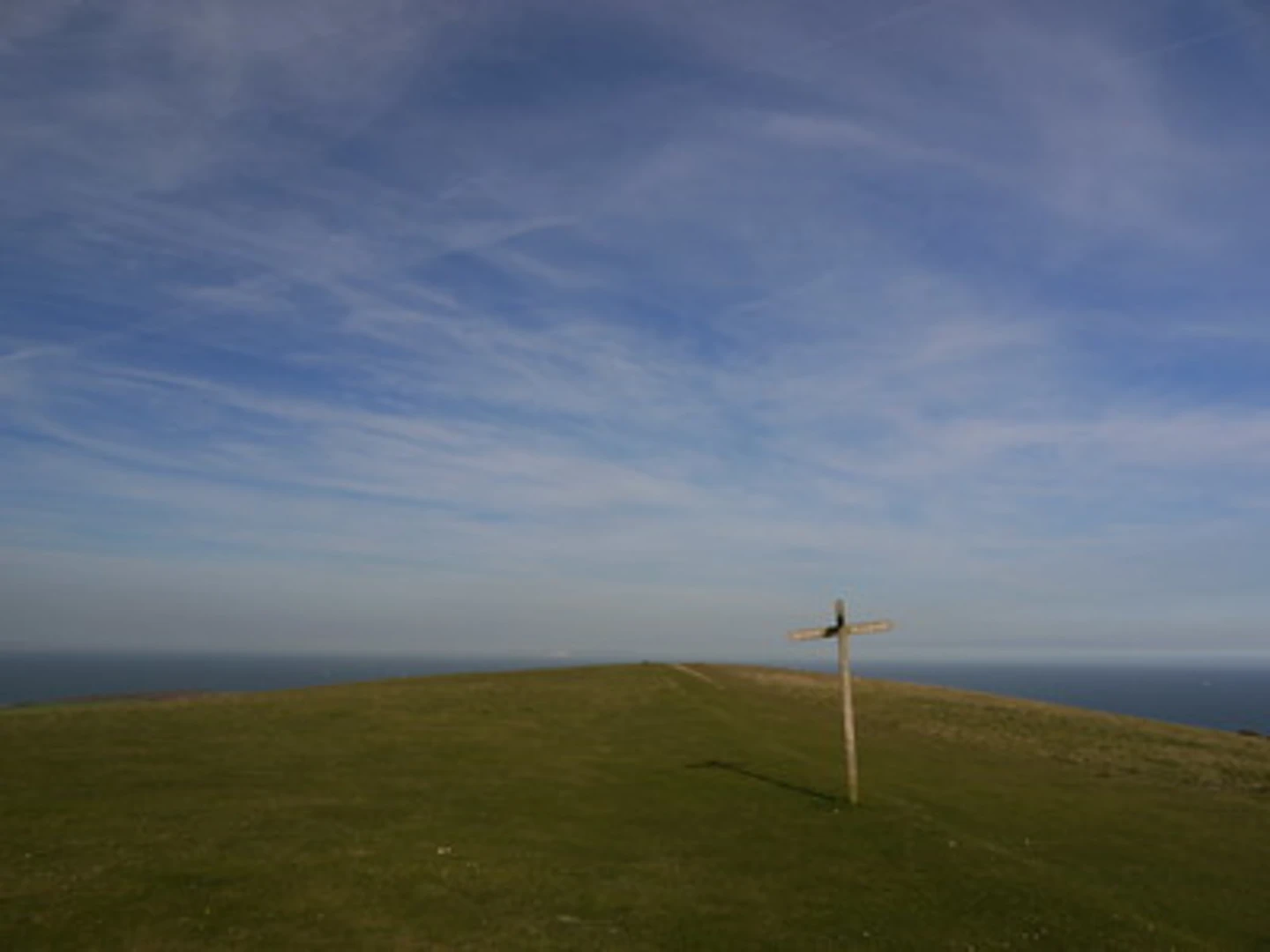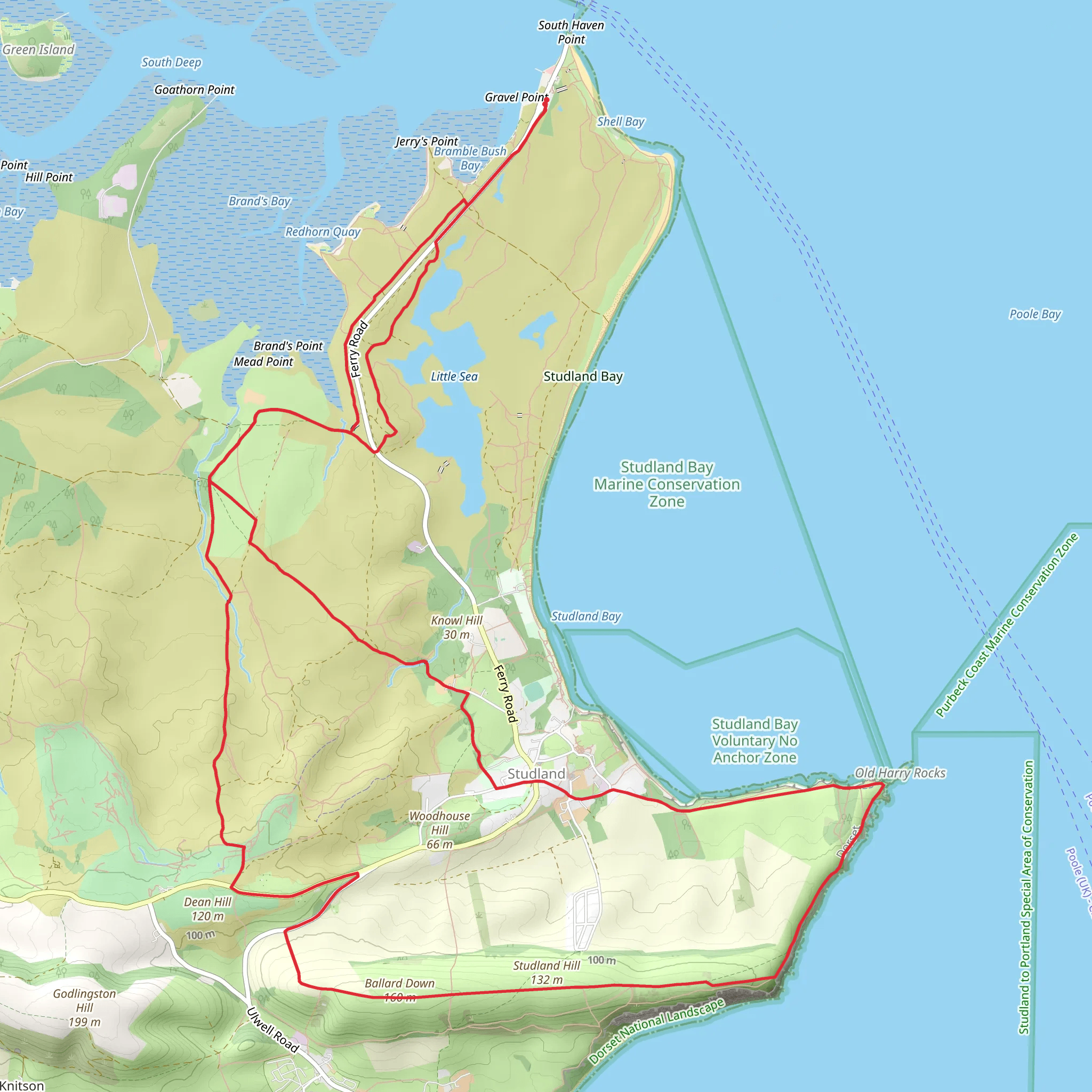Download
Preview
Add to list
More
20.4 km
~4 hrs 34 min
298 m
Loop
“Experience coastal beauty, wildlife, and history on this 20 km medium-difficulty loop near Dorset, England.”
Starting near Dorset, England, this 20 km (approximately 12.4 miles) loop trail offers a delightful mix of coastal scenery, heathland, and historical landmarks. With an elevation gain of around 200 meters (656 feet), the trail is rated as medium difficulty, making it suitable for moderately experienced hikers.
Getting There To reach the trailhead, you can drive or use public transport. If driving, head towards the village of Studland, where parking is available near the South Beach car park. For those using public transport, the nearest significant landmark is the Swanage Railway Station. From there, you can take a local bus or taxi to Studland.
Trail Overview The loop begins near the South Beach car park in Studland. From here, you will head towards the Little Sea, a freshwater lake that is part of the Studland and Godlingston Heath National Nature Reserve. This area is rich in wildlife, including various bird species and rare plants. The first 3 km (1.9 miles) of the trail are relatively flat, making for an easy start.
Little Sea and Studland Heath As you continue, the trail takes you through the heathland, where you can expect to see a variety of flora and fauna. The heathland is particularly known for its heather and gorse, which bloom beautifully in late summer. Keep an eye out for Dartford warblers and sand lizards, both of which are native to this area.
Old Harry Rocks Around the 10 km (6.2 miles) mark, you will reach the iconic Old Harry Rocks. These chalk formations are one of the most famous landmarks on the Jurassic Coast, a UNESCO World Heritage site. The rocks are named after a notorious pirate, Harry Paye, who used the area as a hideout in the 14th century. The cliffs offer stunning views of the coastline and are a perfect spot for a break and some photography.
Elevation and Terrain The trail then ascends gradually, gaining around 200 meters (656 feet) in elevation. The climb is steady but manageable, offering panoramic views of the surrounding landscape. The terrain varies from sandy paths to rocky sections, so sturdy hiking boots are recommended.
Return to Studland The final stretch of the loop brings you back towards Studland, passing through more heathland and eventually rejoining the path near the Little Sea. The last 5 km (3.1 miles) are relatively flat, providing a gentle end to your hike.
Navigation For navigation, it is advisable to use the HiiKER app, which provides detailed maps and real-time updates. This will help you stay on track and ensure you don't miss any of the key landmarks along the way.
Historical Significance The area around Studland and Old Harry Rocks is steeped in history. The Jurassic Coast itself is renowned for its geological significance, with rock formations dating back over 185 million years. Additionally, the heathland has been used for centuries for grazing and military training, adding layers of historical context to your hike.
This loop trail offers a rich blend of natural beauty, wildlife, and historical intrigue, making it a rewarding experience for any hiker.
What to expect?
Activity types
Comments and Reviews
User comments, reviews and discussions about the Little Sea, Studland Hill and Old Harry Rocks Loop, England.
4.0
average rating out of 5
3 rating(s)

